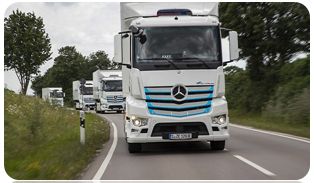
Sumit Ramchandani
Sybsc II
AISSMS College of Hotel Management and Catering Technology
Mercedes Benz has launched its sustainable heavy distribution truck called “Eactros”.It focuses on reducing the induced air pollution by primarily combating Climate change. The truck is available for transportation of goods in urban areas, it is yet not available everywhere, although prototypes have been tested in different urbanized roads in order to assess their constant function reflected with the release of co2 emissions. This is a massive initiative by the vehicle company.
What is meticulously assessed?
The battery-electric vehicle has been tested in urban areas in different European countries.The testsincludespeed, range, drive power, and safety. 10 electric vehicles are specifically and alternatively used for the mentioned activity. The battery is also part of the standard operating procedure for Mercedes in all type of their cars, however since the “Eactros” is powered by three to four battery packs, the method and mode of listing and charging is scrutinized to identify whether it meets the tested principles of the daily functional operations with the number of goods that are carried.

Specifications
- Batteries (3-4) 105kWh each
- Voice systems – Consultant and service car embedded
- Electric digitalization and connection
Mercedes Benz has been the example of the system that highlights “best vehicle utilization”, “total cost optimization” for other haulage companies to move forward a sustainable electromobility by using the specifications of “Eactros” as the initial model.
“Eactros”, the recently launched electric truck debuted by Mercedes will be part of the potential vehicles that will accompany and ease the heavy distribution of goods as we combat the present climate crisis.
The questioned challenges of “Eactros”
The truck is perfectly equipped and it meets the criteria of how an ordinary electric car would run, however, we are talking about a truck here and what is behind the resourceoptimization and efficiency. Will the testing method be the same if I carry or havebigger haulage? Will the specifications still run the same as the prototypes in an odd circumstance?
We are talking about the beginning of electric haulage as the future of transportation, the same industry that has been a triggering factor and a major contributor to Climate change.
